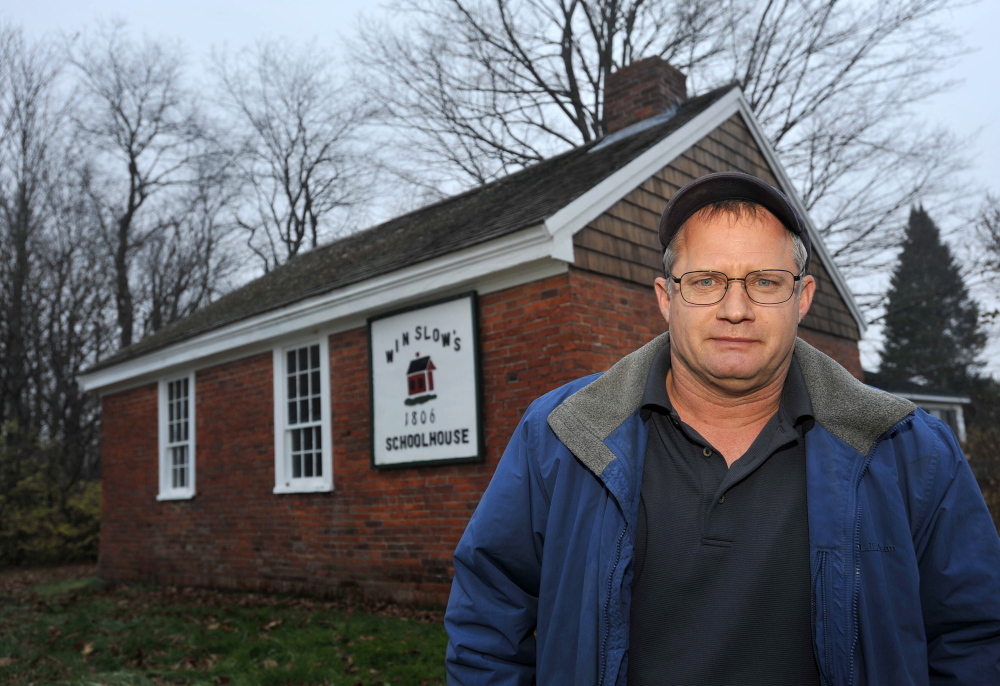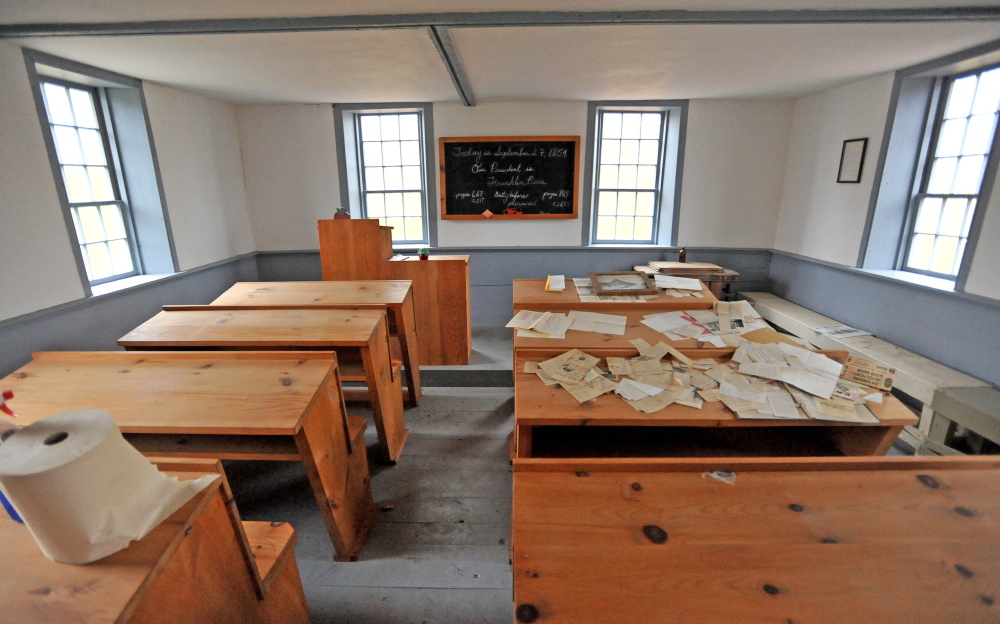WINSLOW — The Town Council has voted to accept ownership of one of Maine’s oldest surviving brick schoolhouses, taking the first step toward preserving the historic structure for future generations, according to supporters of the decision.
After a lengthy debate about the cost of maintaining the building and its value to the town, the council took ownership of the building in lieu of about $200 in tax debt owed by the heirs of longtime owner Francis Giddings.
“I’m totally elated we have done that,” said Councilor Raymond Caron, a former member of the now-defunct Winslow Historical Society, which once owned the building.
When the society disbanded in the late 20th century, ownership reverted to Giddings’ heirs.
Accepting ownership of the building does not come without expense for the town. After the historical society spent $20,000 restoring the building more than two decades ago, it is again in need of repair, Caron said.
Town Manager Michael Heavener said he has obtained estimates of the cost of repairing the building’s aging masonry totaling $13,500 using historically accurate methods and $3,000 using modern techniques.
Even if the town uses modern restorative techniques, the building will not be removed from the National Register of Historic Places, Heavener said.
Additionally, Caron said a tree needs to be removed at an estimated cost of $900, and the building needs about $500 in window repairs to prevent water intrusion. The owner of adjacent property has agreed to pay half the cost of tree removal, he said.
Caron said he doesn’t mind using modern masonry, which is more durable, if it means saving the building.
“Everybody would like the historical replication to be accurate as it can be, but sometimes it just doesn’t make sense,” he said.
Once the building is restored, Caron estimated the town will need to set aside $1,000 to $2,000 to cover future maintenance projects at the site.
“What we’re looking at now is some pretty minor work for the preservation of the building,” he said.
Despite the unanimous vote, not all council members support the measure fully.
During discussion, Councilman Ken Fletcher pushed to delay accepting ownership until the town could gauge the maintenance costs better and establish a firm plan for the building’s use and value to the taxpayers.
“I’ve heard words and I’ve seen forecasts on cost, but I just do not have a real comfort feeling that says we’ve really looked at cost,” he said.
According to Fletcher, when town officials first began discussing ownership of the schoolhouse in summer, repair estimates were just $1,100.
Meanwhile, Winslow Elementary School Principal Kyle Price told the council the building could be used for “experiential learning” projects by students across all grades, visiting the school and living as a student would have when it was still functioning.
He also suggested that vocational students in high school could be involved in maintaining and repairing the building.
“We don’t have a solid plan, but we do have a vision,” he told the council after Fletcher called for a letter of intent from the school to better define exactly what value the building held for taxpayers.
Caron said scrutiny about the expenses was warranted and not unusual.
“This is not abnormal to the process that we use to make every decision on financial matters,” he said.
Heavener said he wasn’t sure when the town would decide how to repair and maintain the building, but he would communicate those plans with the council.
Any expense exceeding $20,000 is subject to approval by a council resolution, he said.
Added to the National Register of Historic Places in 1977, the schoolhouse predates the incorporation of Winslow and the formation of the state of Maine.
Part of the Kennebec Valley Land Trust issued by the state of Massachusetts to veterans of the American Revolution, its construction was a condition for settlers to accept land in the Winslow area.
Evan Belanger — 861-9239
ebelanger@centralmaine.com
Twitter: @evanbelanger
Send questions/comments to the editors.




Comments are no longer available on this story